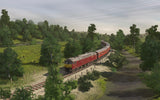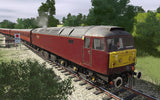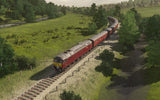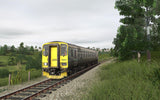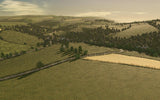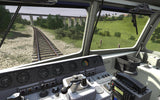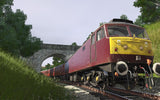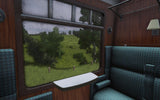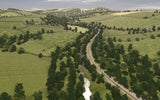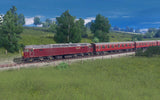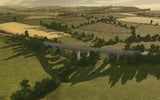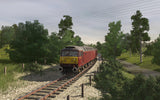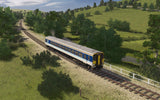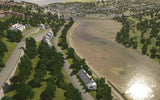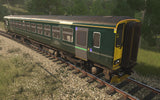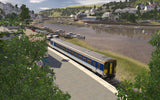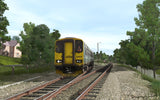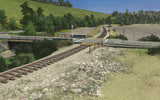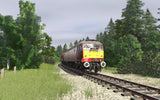In Game Downloadable Content (Requires Internet Connection)
Compatible with: Trainz Plus TRS22The horse drawn Liskeard and Caradon Railway was opened during the 1840s to transfer ores from the Caradon mining district and granite from Cheesewring to the northern end of the Liskeard and Looe Union Canal at Moorswater. From there cargos were transported on barges to the inlet at Looe for coastal shipping.
While the canal's operators initially enjoyed the prosperity of steadily increasing traffic, the infrastructure was soon operating at full capacity and in the late 1850s the company began construction of a railway alongside the canal. Operational management of the line was taken over by the Liskeard and Caradon in 1862.
By the 1870s mineral traffic was in decline. Passenger services were introduced in 1879, though Moorswater's location 200ft below the nearby Cornish Main Line at Liskeard made connections inconvenient. Over the ensuing years various proposals to link Moorswater with the main line were considered and in 1895 the Liskeard and Caradon Railway obtained an Act of Parliament authorising it to construct one.
Unfortunately for the Liskeard and Caradon, minerals business continued to decline and the company went into receivership. The Liskeard and Looe Union Canal company changed it's name to the Liskeard and Looe Railway and sought finance to build the extension. In 1898 work began on a steeply ascending 2 mile loop branching from the existing line and reaching Liskeard station at 90° to the main line. The extension was opened in 1901 along with Coombe Junction Halt and the Moorswater station was closed to passengers.
While traffic increased significantly as a result of the extension, interest on it's cost was a burden to the Liskeard and Looe, and in 1909 GWR took over both the Liskeard and Claradon and Liskeard and Looe operations, enthusiastic to maintain it's dominance in the region. By 1916 mineral traffic had shown little sign of recovery and the railway north of Moorswater was dismantled. Plant along the quay at Looe was also removed around this time.
Counting it's mileposts from Looe, the railway follows the course of the East Looe River, starting out level for the first two miles and then climbing continuously to the terminus. The four halts along the line are request stops with only two weekday trains servicing the Coombe Junction Halt. Safeworking is by staff and electric token and the journey requires a reversal of direction at Coombe Junction.
The steep grades and tight curves thread a picturesque valley largely unblemished by modern developement, leading to a charming coastal town and popular tourist destination. A surviving railway built by a canal company to handle traffic from a long since abandoned mineral railway, the Looe Valley Line is truly one of Britain's railway marvels.
Includes:
- 3 prototypical sessions
- Experience the new Class 47 engine in spectacular detail.
- Climb into the new Class 47 fully interactive cabin interior.
- Ride in the Mk1 Brake Second Corridor coach with full interior.
- Get first class service in the Mk1 First Open coach with full interior.
- Sit back and enjoy the Mk1 Trailer Standard Open coach with full interior.
- Experience the all new Class 153 GWR Green loco.
- Drive the new Class 153 Regional Railways engine.
- Take control of the Class 153 with fully prototypical cab interior.
| Platforms Supported: | PC & MAC |

